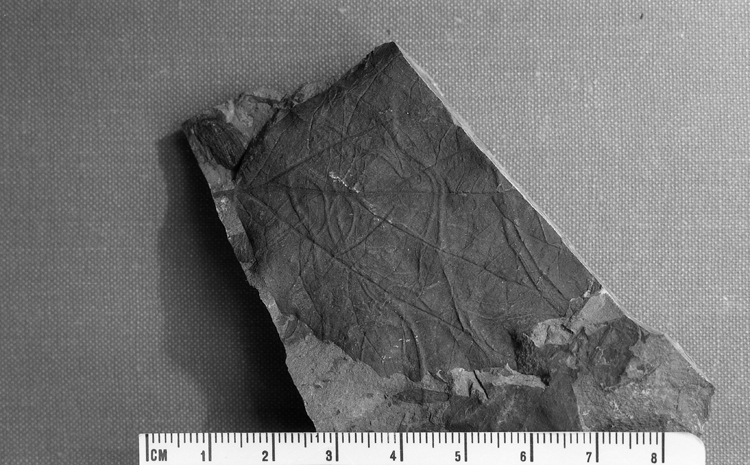Locality
Amaam Lagoon Locality
Description
From Moiseeva (2012) (p. 79)
"Leaf lamina greatly variable in dimensions, from 2.7 to 20 cm long and 1.7 to 18 cm wide; larger leaves prevail over the others. Leaves simple, vary through transitional morphotypes from trilobate to entire. The middle lobe is larger as a rule than the narrower lateral lobes with apices pointed upward and somewhat aside. Among the leaves there are symmetrical and slightly asymmetrical specimens. Outlines of leaf blades are variable: oval, oval ovate, broad ovate, or obovate. Broad cuneate decurrent base characteristic of most leaves is sometimes narrowing cuneate or truncate; apex acute, occasionally tapered a little. Petiole up to 3.5 cm long and 1.8 mm thick is frequently missing.
Leaf margins varies from weakly undulate to serrate or dentate. In basal parts, margins are entire or finely serrate, whereas higher teeth are larger, with apices pointed upward. In some leaves there are more or less distinct double serrate margins with a regular alternation of larger and smaller teeth in particular specimens. Broadly triangular asymmetrical teeth as wide at the base as 4–10 mm are up to 1.5–4.0 mm high. Tooth apices with glandules are acute in most cases but may be subrounded as well. Apical sides of teeth are commonly concave, the basal one convex. The midrib ends in the tooth apex, and no additional veins are preserved. Sinuses between the teeth are rounded and, most often, shallow.
Venation suprabasal actinodromous, craspedodromous or semicraspedodromous. Lateral veins (5–12 pairs) alternate, sometimes nearly opposite; basal veins noticeably thicker than others depart from midrib at the angles of 40° to 50° 0.2–1.5 cm apart from the leaf base. They have 1–3 acroscopic and 5–9 basiscopic branchlets with deviation angles of 25°–30°, which are anastomosing with each other in leaves with undulate margins, otherwise ending in the teeth. When veins ramify near the leaf margin, one branchlet ends in a tooth, whereas the other one joins the higher vein. One to two pairs of thinner infrabasal veins depart from mid rib at the angle of 45°–50°. These S shaped veins anastomosing with each other and with branchlets of basal veins form series of loops and sometimes end in the teeth. Suprabasal veins (3–8 pairs) are either nonbranching or have one or two branchlets in distal parts. Tertiary venation mixed-opposite and alternate-percurrent, with sparse, curved, sometimes branching anastomoses departing from secondary veins at approximately right angles. Venation of the fourth order orthogonal reticulate with closed well developed polygonal areolae. Thin veins form loops near the margin."
Remarks
From Moiseeva (2012) (p. 79)
"Lectotype: specimen figured by Newberry (1898), (pl. XXXV), from the Fort Union Formation (Paleocene), occurrence locality Yellowstone Banks, Montana, North America."
